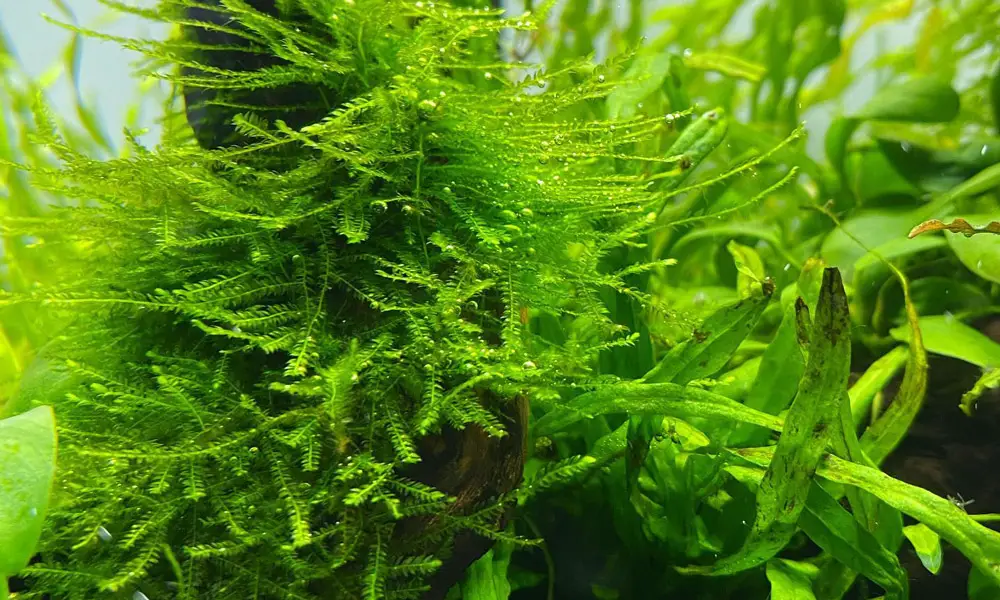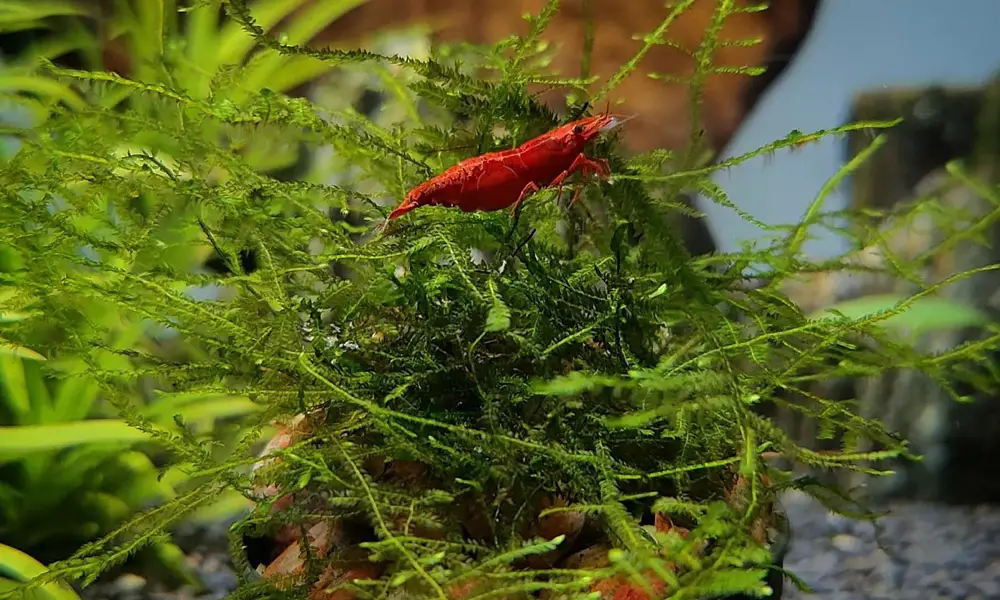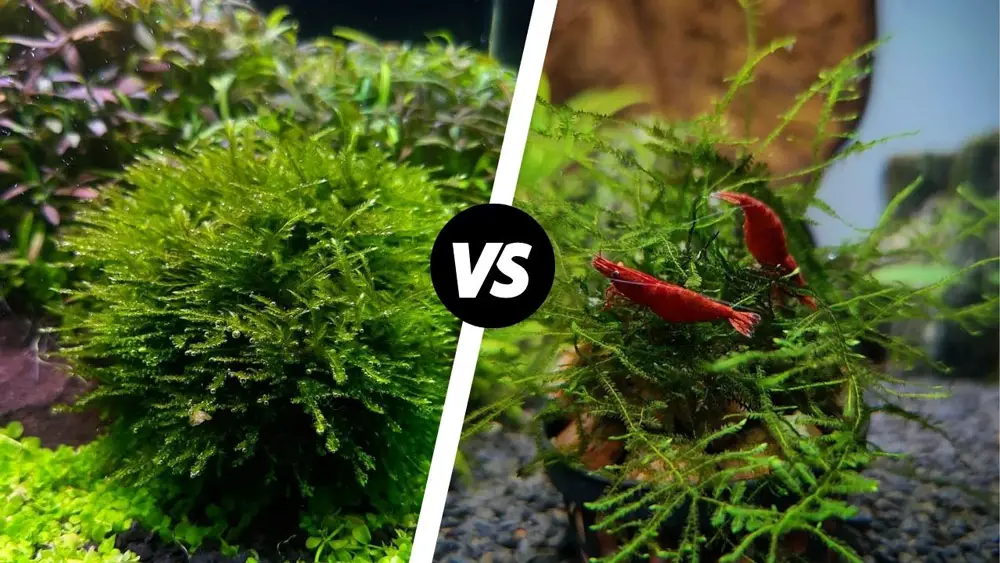Aquarium mosses are underwater plants that can provide a number of benefits to your tank. They can help to oxygenate the water, offer hiding places for fish and other aquatic creatures, and even help to filter the water.
Mosses come in a variety of shapes, sizes, and colors, so you’re sure to find one that will complement your aquarium décor.
Three of the most popular types of aquarium moss are java moss, flame moss, and Taiwan moss. All of these mosses are easy to care for and can thrive in a wide range of water conditions. So, which one is suitable for your tank?
In today’s article, we’ll be comparing Java moss Vs. Flame moss vs. Taiwan moss to make everything easy. In it, we go over all the care needs for each type of moss as well as the benefits and drawbacks of keeping them in your aquarium.
Java Moss Vs. Flame Moss
The main difference between Java moss and flame moss is their growth speed. Java moss grows faster than flame moss in the same condition. If you’re looking for a plant that will quickly cover the surfaces of your aquarium, Java moss is the way to go.
Java moss is a bright green color and has a more compact, bushy growth pattern. Flame moss, on the other hand, is deep green and has a more spread-out, flame-like growth style.
Java moss Vs. Taiwan Moss
Taiwan Moss is not quite as well-known as Java moss. The main difference between Java moss and Taiwan moss is their unique growth patterns. Java moss grows in every direction, while Taiwan moss tends to grow strictly downward.
Additionally, if you have Java moss and Taiwan moss in the same aquarium, you will notice that the Taiwan moss is thinner and has an elegant, refined appearance than Java moss. Taiwan moss also has brighter color.
Java Moss (Taxiphyllum Barbieri)

Java moss (Taxiphyllum Barbieri) is a type of moss that originates from Southeast Asia. It’s a popular choice for aquariums because it’s easy to care for and can grow in a wide range of water conditions.
Java moss has no “real” roots, but it can attach to any surface with its rhizoids and quickly spread to cover large areas. This makes it a great plant for aquascaping. Compared with roots, rhizoids only work as anchors that attach the growing body to surfaces instead of absorbing nutrients. Their irregular branched stems and long oval-shaped leaves are doing the job.
These mosses are often used by aquarists to provide a natural appearance in the aquarium, serve as a spawning substrate for egg-laying fish, or as a place for fry and shrimp to hide.
Java moss can grow in both low and high light conditions, and you can control its growth pace by adjusting the amount of light it receives. If you want your java moss to grow faster in the beginning, give it sufficient light.
Remember that these three moss do not need direct sunlight as it will stimulate algae growth, so be sure to provide some shading if you have a very bright aquarium.
There is no need to worry about the severe pruning of this plant as it will quickly grow back. In fact, you can shape it into attractive clusters by following the lines of bases.
Don’t lay it too thickly on the ground as this may rot under layers, which may cause ammonia spikes.
- Temperature: 14-30°C/57-86°F
- pH: 6-8
- GH: Adaptable
- KH: Adaptable
Flame Moss ( Taxiphyllum sp.“Flame”)
Flame moss ( Taxiphyllum sp.“Flame” ) is a frequent addition known for its unique growth. Aquascapers or fish keepers love this moss because of its ability to enhance any tank with a spreading green hint of vegetation. Flame moss is regularly used as a decorative plant in aquariums.
This plant has an interesting growth style, with long, thin leaves that branch out from the stem in a distinct upward spiral form a “flame-like” pattern. Compared to Java moss and Taiwan Moss, Flame Moss is a deeper green color. It also can grow thick and bushy, making it perfect for clumps in your tank or garden.
Like Java moss, Flame moss grows from rhizoids and can be anchored to driftwood, rocks, or any other surfaces in your aquarium using string, thin rope or fine fishing line, or super glue. You can weigh down your moss with rocks for your snails, who will love to displace them.
Flame moss is a hardy plant and can adapt to a wide range of water parameters. These moss are not fussy about light requirements and will thrive in low to moderate light aquariums and a variety of pH levels, making it a great choice for anyone with a low-tech tank.
Although CO2 and liquid fertilization are unnecessary, they will help the Flame moss grow faster and boost the brightest coloration.
- Temperature: 20-28°C/68 – 83 °F
- pH: 6-8
- GH: Adaptable
- KH: Adaptable
Taiwan Moss ( Taxiphyllum alternans)

Taiwan moss (Taxiphyllum alternans) is not as widely known as Java moss and Flame moss, but it’s a great alternative that is quickly gaining popularity with its low lighting requirements.
Taiwan moss looks similar to Java moss and Willow moss, but it has a more delicate appearance with supple and thicker leaves. It is an excellent alternative to Java moss as they have matching nutrition requirements.
This moss grows sideways and has delicate foliage and thicker fronds. They will become overhanging when the leaves start to grow out.
Taiwan moss can be used in a similar way as Java moss and Flame moss, as the same rhizoid rooting system that allows them to be attached to wood or rocks by using a fishing line or super glue.
You can also create a Taiwan moss carpet by growing them on a mesh sheet and attaching the sheet to the bottom of your aquarium. Taiwan moss is a slow-growing plant, so patience is required when creating a Taiwan moss carpet.
The name for this moss is very indicative of its origin. Taiwan moss has a low demand for lighting and will do well in low and high light aquariums.
Taiwan moss is also an easy plant adaptable to a wide range of pH levels, making them a smart choice for creating foreground or hiding equipment in the aquarium.
- Temperature: 15-28°C/59° – 82° F
- pH: 5.5 – 7.5
- GH: Adaptable
- KH: Adaptable
Final Thoughts
Java moss, Flame moss, and Taiwan moss are very easy and decorative plants to keep without much extra care. They don’t require additional CO2, but some added CO2 will promote growth and enhance their coloration like all plants.
You can use all three of these mosses similarly by attaching them to driftwood or rock using a fishing line or super glue.
Choosing which moss to grow in your aquarium is a personal decision. But if you’re looking for moss with a fast growth rate and focused on the results, you will want to stick with java moss.
If there’s anything you think we missed about these three plants, please let us know in the comments below!



